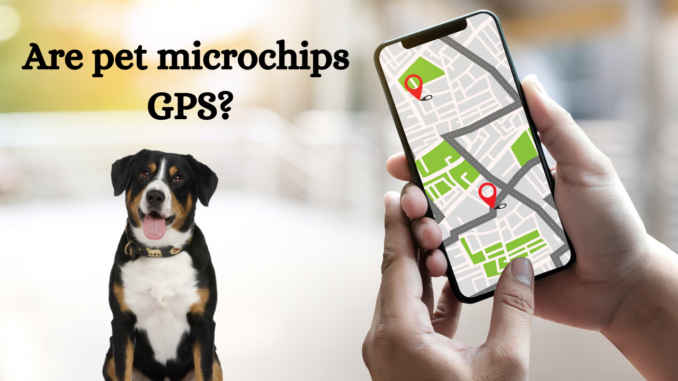
Can a microchip help to locate your lost pet? What other GPS products are available on the market today for pets?
Pet microchipping came on the market in the 90’s and revolutionized pet care. Finally, there was a way to permanently identify your pets! Almost 30 years later, microchip technology and registration has grown and improved, but it’s still not a perfect system. If your pet goes missing, they must first be found before they can be scanned for the chip. What if you don’t know where they are? This problem leads to an often-asked question, and a seemingly logical progression: Do pet microchips have GPS?
Unfortunately, the short answer is no, but why? We have GPS in all sorts of small devices, most commonly our mobile phones. We can pull up directions, find our way out of the woods, and locate a lost phone with GPS. Why won’t this work for our pets?

Power source
GPS devices require a power source, and a significant one. Batteries for GPS systems need to be recharged on a regular basis. Today’s mobile phones have longer-lasting batteries, but they still need to be charged daily or every couple of days, especially if battery-draining apps like navigation are being used. Because the chip is completely inside the body of the dog or cat, there is no way to provide external power. You can’t plug in your dog.

Microchip signal
The microchip is what’s called a passive transponder. It’s like a tiny antenna that only provides output when pinged by the scanner. For this reason, they can last 20 or more years and still work without any kind of power source. GPS is constantly giving off a signal, connecting with the positioning satelites. The microchip doesn’t give off any signal by itself, so can’t be used for location.
Future possibilities
Although microchips are not GPS today, could they be in future? Maybe, if power sources unknown to us are identified and utilized. Could a battery be miniaturized enough to be implanted? Could it last for years? Human pacemakers can maintain power for more than five years, although the procedure to change the batteries (and to implant the device in the first place) involves surgery. There are, however, other GPS alternatives for pets.
GPS collars
There are several GPS devices for pets on the market which are worn on a collar. These are increasing in popularity, especially for dog owners who live on a large property that isn’t securely fenced. They work in a manner very similar to the GPS on your phone, connecting to a cellular network to maintain the dog (or cat)’s position. These devices pair with a proprietary app which includes features like setting a boundary around your property on a map. When your dog goes past that boundary, you will receive an alert. Like your phone, they must be charged regularly, but some brands claim to last for up to a week on one charge. Stay tuned for a future article and video comparing the brands available today.
GPS or not, all pets should be microchipped and registered. Although the chip won’t help with loction, it will provide your pet’s ticket home when they are found by someone else and taken to a shelter or vet for scanning.




